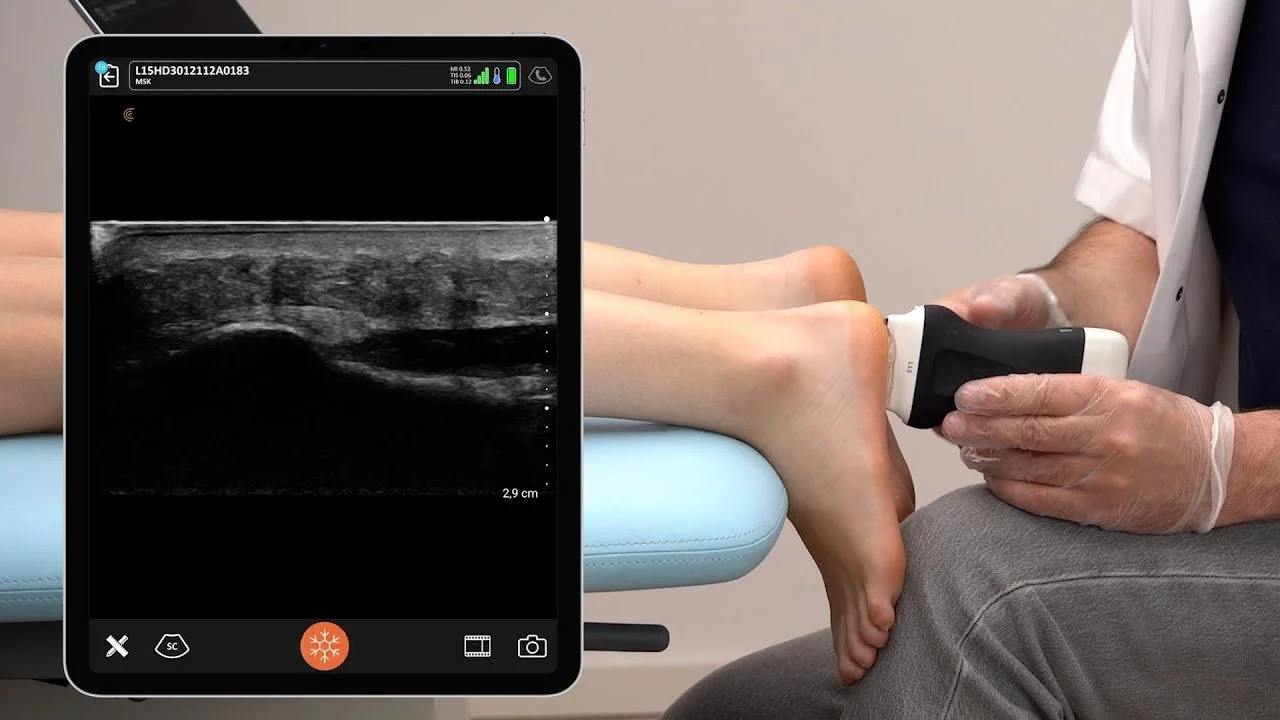
Ultrasound
Ultrasound is a safe, non-invasive imaging tool that allows podiatrists to see inside the foot and ankle in real time.
At Solevanna Foot & Ankle, we use diagnostic ultrasound to evaluate soft tissue injuries, inflammation, and masses so we can get to the root cause of your pain and create an effective treatment plan. Our goal is simple: to help you heal quickly and get back to your active lifestyle.
What is an Ultrasound?
An ultrasound scan uses high-frequency sound waves (not radiation) to create detailed images of muscles, tendons, ligaments, nerves, and soft tissues in the foot and ankle. Unlike X-rays, which primarily show bone, ultrasound provides a dynamic view of soft tissues, even while your foot is in motion.
Ultrasound is an excellent tool for diagnosing:
Tendon and ligament injuries (sprains, tears, or inflammation)
Plantar fasciitis and heel pain
Morton’s neuroma or nerve entrapments
Ganglion cysts or soft tissue masses
Foreign bodies (such as glass, wood, or other objects in the foot)
Bursitis, tendonitis, and cartilage damage
Tarsal tunnel syndrome
Diabetic foot ulcers and wound infections (to assess fluid collections or abscesses)
Ultrasound can also be used to guide precise treatments, such as injections, aspirations, or minimally invasive procedures, ensuring safety and accuracy.
BENEFITS OF ULTRASOUND IN FOOT & ANKLE
✔️ Non-invasive & radiation-free – safe for all ages, including pregnant patients.
✔️ Real-time imaging – allows your podiatrist to watch structures move and assess injuries dynamically.
✔️ High accuracy – captures detailed views of soft tissues not visible on X-rays.
✔️ Guided treatment – improves precision during injections or procedures.
✔️ Convenient & in-office – available right at your appointment for immediate results.
WHO CAN BENEFIT FROM ULTRASOUND
Ultrasound is an excellent option for anyone experiencing:
Heel or arch pain
Sports injuries
Numbness, tingling, or burning in the toes or ball of the foot
Swelling or unexplained lumps
Chronic tendon or ligament pain
Non-healing wounds or ulcers
Because ultrasound is safe, painless, and radiation-free, it can be performed as often as needed to monitor healing or guide treatment.
What to Expect During Your Ultrasound?
👣 PREPARATION
You may be asked to remove your shoe, sock, or any jewelry near the exam area.
💧GEL APPLICATION
A small amount of water-based gel is applied to the skin to improve contact and create clear images.
🔍 SCAN
Handheld probe captures real-time images on a monitor
📝 REVIEW
Dr. Doan will go over the results with you, answer your questions, and explain your treatment options.
Frequently Asked Questions About Diabetic Foot Exams
-
X-rays show bones, while ultrasounds show soft tissues in motion. If you have pain, swelling, or numbness that isn’t explained by an X-ray, ultrasound helps us see tendons, ligaments, and nerves in greater detail.
-
In many cases, yes when medically necessary. Coverage may vary depending on your insurance plan
-
Yes. Ultrasound uses sound waves, not radiation, making it safe for patients of all ages, including pregnant patients.
-
Yes. In addition to diagnosis, ultrasound can be used to guide injections or minimally invasive procedures with pinpoint accuracy, ensuring safer and more effective treatments.
-
Most foot and ankle ultrasounds take about 15–20 minutes. Results are available immediately, and Dr. Doan will review them with you during your visit.
Disclaimer: The information on this website is for educational purposes only and should not replace professional medical advice, diagnosis, or treatment. Always consult your doctor with any questions about your health.